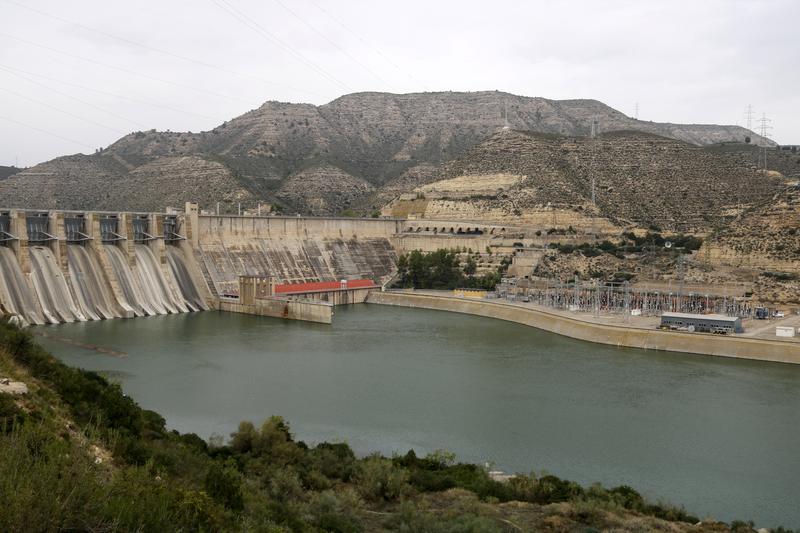Drought forces shutdown of one of largest hydroelecrtic power plants
This year has seen 32% less energy generated compared with average of past ten years

The ongoing drought and low reservoir levels will force electricity company Endesa to stop production at one of its hydroelectric plants for the first time ever.
The hydroelectric power plant at the Mequinensa reservoir is one of the biggest such plants on all of the Iberian peninsula and is located on the border between Catalonia and the neighboring region Aragon to the west.
The planned shutdown will take place in mid-November due to reserves dipping below 23% of its total capacity, the second-worst level ever recorded since the dam it was opened in 1966.
Additionally, unless rain comes soon, other power stations in western Catalonia could also see production halted.
This year 32% less energy has been generated from hydroelectric power than in the average of the last 10 years and you would have to go back to 1989 to find such low production.
The head of Endesa's production center for the entire peninsula, Ángel Garcia, explained in an interview with the Catalan News Agency that the difficulties began last year, a year that was very dry. However, thanks to reservoir reserves, energy production could be carried out "correctly."
With very little rain this year after a particularly dry winter last year, reserves have dropped further again, causing one of the worst years for energy production levels.
According to Garcia, hydroelectric electricity production has not been as low since 1989.
Hot summer, dry winter, irregular rain patterns
Catalonia has suffered one of the hottest summers on record in most of the territory in 2022. In the Barcelona weather station, which has data stretching back to 1905, the second hottest summer ever was registered, with an average temperature of 26.2°C. This is 4.4°C hotter than the average between 1961-1990.
All parts of the territory saw temperatures between 2.5-5.5°C hotter than summer averages, and most saw record high levels of heat, surpassing records set in a particularly hot summer in 2003.
August also saw very irregular rain patterns. The territory had some periods of heavy rain and thunderstorms but overall it was very dry.
Additionally, last winter was the driest in 50 years, with many parts of the country only getting about 20% of its average rainfall for that time of year. These factors have combined into a disastrous set of conditions for water reserves and agriculture.
Catalan News covered the ongoing drought in our podcast, Filling the Sink, in September. You can listen to the episode below.
11th-century sunken church emerges from water
This summer, a church unique in the world, located in central Catalonia, has piqued the curiosity of thousands of locals and tourists as it emerged out of the water and became fully visible for the first time in many years.
Normally, this 11th-century Romanesque church of little architectural or historical value apart from its strange location and setting is almost entirely submerged under water.
However, in the summer of 2022, the drought in Catalonia progressively worsened and worsened, to the point that the church has become entirely visible – and for the first time in many people’s memory, even parts of a nearby cemetery and school are also emerging from the water.


